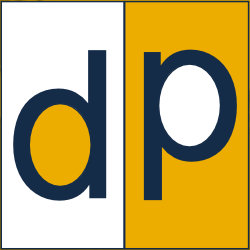Enabling Cost-effective use of Composite Materials - Case Study
Bicycle design is another of the growing list of industries where the advantages of carbon fiber materials are being applied. We recently interviewed Guy Maximilian Kemmann, Chief Designer and Owner at Kemmann Komposites, to learn more about the business drivers for implementing digital design and patterning into the production process.
Can you tell us a little bit about your company’s role in helping your clients achieve their business goals?
The use of composite materials means greater strength and stiffness with less weigh. This is ideal for cycling components
Kemmann Komposites designs and manufactures handmade saddles for cycling enthusiast. We produce all the components in carbon fiber, from the saddles themselves to the rails, and the connecting hardware.
In the cycling world, riders will go to great lengths to reduce weight. We’ve seen clients who are willing to spend as much as $1,000 to remove just 100 grams. A typical road bike weighs about 8 kg. By focusing on the saddles we’re attacking one of the last components that hasn’t been updated to carbon fiber. Our target is to remove at least 120 grams per seat.
What is your typical design-to-manufacturing process?
Today our design process is digital (3D CAD) but everything else is completely manual and that’s why we’re looking at digital patterning.
The process starts with the 3D CAD model and then evolves into the CNC mold and 2D pattern pieces which are all created directly from the model.
Start with a 3D design that we use to create the molds with our CNC equipment
Use the manual “Drape and Tape” method on the mold to generate a rough pattern.
Place masking tape in a section of a mold.
Use a pen to trace out the pattern pieces on the tape.
Carefully, remove the tape segments from the mold.
Align the segments and cover the back side of each piece with more tape.
Place the tape pieces on a sheet of material and cut out the patterns.
Iterate on the pattern until it's right (Cut, Mold, Review, Repeat)
We start after the mold is ready, and it can take a couple days to get a pattern. If we run into problems or need design changes, we basically need to go back to the beginning.
Why have you decided to change/enhance the process?
It’s a relatively new process, and we are using pretty much the same techniques we’ve seen elsewhere. It’s just not working for us. The 3D to 2D patterning step (aligning the tape in the mold) is tedious and imprecise. We smudge the ink, we rip the tape, we can’t get the tape to lay flat unless we use lots of thin strips. Then after we’re done with that, we get a test pattern and must cut and mold the material before we can see how close we are to the design we want. It’s definitely an area where we needed a change in order to sustain the business.
3D to 2D pattern making was a slow, tedious and imprecise process until Kemmann and the team made the transition to digital patterning. Now they can create patterns in minutes and identify issues before any materials are cut.
What led you to believe that digital patterning could help?
We’d been using the ExactFlat Student License while we were at school (Clemson University) and knew it would fit into our business. It’s simple-to-use and works directly with our CAD files:
Prepared the 3D CAD model for patterning by defining pieces and possible cuts.
Published the model to ExactFlat.
Flatten and optimize the pattern pieces then generate a DXF file for printing.
Print the files, laid them over the material and cut the pieces.
From there we’re able to go directly into the mold and begin making parts.
What surprised you the most about the digital patterning process?
I wouldn’t say we were surprised because as I mentioned, we’d use the software for projects while we were at school. What I can say is that there are a few key features that helped us make the decision to implement:
Speed and ease-of-use
Of course these capabilities are at the top of the list. Once you prepare the 3D CAD file, you click on the model and then you get a pattern in just a couple minutes. This used to take us hours! And the software is simple, I mean, really simple. Anyone on the team can use it with really no training at all.
Precise Patterns
Another big advantage with ExactFlat is the strain display which helps us determine where or if relief cuts are needed. This takes the guesswork out of patterning and layup. We spent a lot of time on this in the past and now we’re confident that we get a pattern that fits with little or no iterations.
Integrated workflow
The other critical workflow benefit is the fact that we can look at the rough pattern earlier in the process. We generate the 2D pattern from the 3D CAD file and not the physical mold. That means we can decide if we need to make a change before we cut any metal for the mold or waste ant of the expensive carbon fabric. This should be a game changer for us when it comes to keeping our costs down.
The finished products meet or exceed customer expectation for performance, and craftsmanship. The business impact is that digital patterning helps the team maintain competitive pricing for superior offerings.
Any final comments you want to share?
Our bottom line is this, we must find ways to eliminate manual steps and scrap or material waste. This is critical for the success of our business. We’re a smaller firm with great products and we’re convinced that automating the steps between design and production is the key to staying competitive.
Try it yourself
Learn more about how your business can begin benefiting from the advantages of digital patterning. Click on the link below to set up a time to speak with one of our experts.













